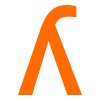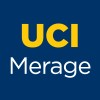
Effects of Cerebrolysin Combined With Rehabilitation on Motor Recovery in Stroke
StrokeThis study, E-COMPASSII is a phase IV clinical trial designed as a multicenter, randomized, double-blind, placebo-controlled, parallel-group study. This study will enroll 80 subacute stroke patients with severe motor involvement. Primary objective is to demonstrate the efficacy of porcine brain peptide to improve motor recovery measured by the improvement ratio of Fugl-Meyer assessment ((score of FMA after 3 weeks - score of FMA at baseline) / score of FMA at baseline) in patients with subacute stroke. Secondary objectives are to evaluate the safety profile of cerebrolysin and to test the hypothesis that subacute stroke patients with severe motor involvement randomized to administration of Cerebrolysin combined with rehabilitation for 3 weeks show better outcome on global function (Korean version Modified Barthel Index, K-MBI), severity of stroke (National Institute of Health Stroke Scale, NIHSS), cognitive function (Korean Version of Mini-Mental State Exam, K-MMSE; Korean version Montreal Cognitive Assessment, K-MoCA), upper limb function (Action Research Arm Test, ARAT; Box and block test, B&B) and neuroplasticity measure (resting-state functional MRI(rsfMRI), diffusion tensor image(DTI), and motor evoked potential(MEP)) at 3 months after stroke.

Mirror Box Imaging Study
StrokeThe purpose of this study is to evaluate the effects of mirror box therapy on upper extremity, motor recovery and motor functioning in patients that have suffered a stroke.

Clinical Trial to Assess the Efficacy and to Evaluate Safety of HT047 in Patients With Acute Ischemic...
Ischemic StrokeTo assess the efficacy and to evaluate safety of HT047 in patients with acute ischemic stroke

Ventilatory Muscle Training in Stroke
StrokePulmonary Ventilation1 moreThe purpose of the present study is to determine the utility and effectiveness of combined inspiratory (IMT) and expiratory muscle training (EMT) in improving ventilatory function in people who are disabled by long-term stroke (greater than 8 months following onset) with hemiparesis or hemiplegia. xx subjects will be randomized into 2 parallel groups in which the experimental group will undergo combined IMT and high-resistance EMT and the comparison group will undergo IMT with low- resistance EMT. Both training techniques involve breathing through a tube with known amounts of resistance. Subjects will perform the breathing maneuvers for 10 repetitions, twice daily, 5 days per week for 4 weeks, in the home environment. Adherence will be monitored by reminder telephone calls at least weekly. Outcomes will be assessed using maximum inspiratory and expiratory pressures and standard pulmonary function testing.

Wearable Device for Motivating Hand Use After Stroke
Cerebral StrokeThe goal of this study is to determine the effectiveness of interactive feedback from a wearable device that senses hand function, the Manumeter, in improving upper extremity function in a pilot, randomized controlled trial with chronic stroke patients

Metabolic Costs of Walking Post Stroke
Acute StrokeThis will be a randomized, matched-group study to compare the cardiopulmonary / metabolic benefits for persons post stroke that learn to walk utilizing early treadmill training post-acute stroke to persons post stroke that learn to walk utilizing non-treadmill based gait training during the same time period. Participants (n=30) will be adults who have completed acute rehabilitation following a stroke. Random assignment will be to either the ESTT or traditional gait training protocol during the outpatient rehabilitation phase. Group A: Traditional outpatient therapy (n = 15) Group B: Treadmill training (ESTT) outpatient therapy (n = 15)

Pilot Study of Efficacy of Mechanical Insufflation Exsufflation in Stroke
StrokeDysphagiaStroke patients with dysphagia have restrictive lung dysfunction and impaired cough response. This pilot study was performed to determine if Mechanical Insufflation Exsufflation (MIE) therapy can help recover impaired cough function.

Pilot Investigation of Stem Cells in Stroke Phase II Efficacy
Ischaemic StrokeCerebral Infarction2 moreThe primary aim of this Phase II trial is to determine whether it is sufficiently likely that CTX DP treatment at a dose level of 20 million cells improves the recovery in the use of the paretic arm in acute stroke patients to justify a subsequent larger prospectively controlled study. This study will evaluate the safety and efficacy of intracerebral CTX DP at a dose level of 20 million cells in patients with paresis of an arm following an ischaemic middle cerebral artery (MCA) stoke. Eligible patients will have no useful function of the paretic arm a minimum of 28 days after the ischaemic stroke (a modified NIH Stroke Scale (NIHSS) Motor Arm Score of 2, 3 or 4 for the affected arm).

Efficacy of Bilateral Stimulation With Task-oriented Training in Improving Lower Limb Motor Functions...
StrokeThis proposed study aims to compare the effects of unilateral and bilateral transcutaneous electrical nerve stimulation (TENS). It will compare the effectiveness of bilateral TENS + task-oriented training (TOT) with unilateral TENS+TOTin improving muscle strength, co-ordination, dynamic standing balance, walking performance, and functional mobility in patients with chronic stroke. The null hypothesis will be that bilateral TENS+TOT and unilateral TENS+TOT are not significantly different in promoting the recovery of these functions.

Rehabilitating Corticospinal Control of Walking
StrokeThe VHA estimates that over 15,000 Veterans incur a stroke each year. As the population of older Veterans grows, stroke will become an increasingly important problem to the VHA. Recovery of walking function is the most common goal of stroke survivors. The proposed study will test whether training with accurate walking tasks to engage the damaged supraspinal motor pathways is more effective than training with steady state walking. The investigators expect that training accurate tasks will be more effective, thereby improving walking function of Veteran stroke survivors and reducing the burden of care placed on families and on the VHA. Furthermore, this rehabilitation approach can be accomplished at comparable cost to existing rehabilitation approaches, which is important given that the VHA invests $88 million per year toward outpatient care, including physical rehabilitation, in the first six months after stroke. This research also has implications for rehabilitation of other neurologically injured populations, including traumatic brain injury and incomplete spinal cord injury.
